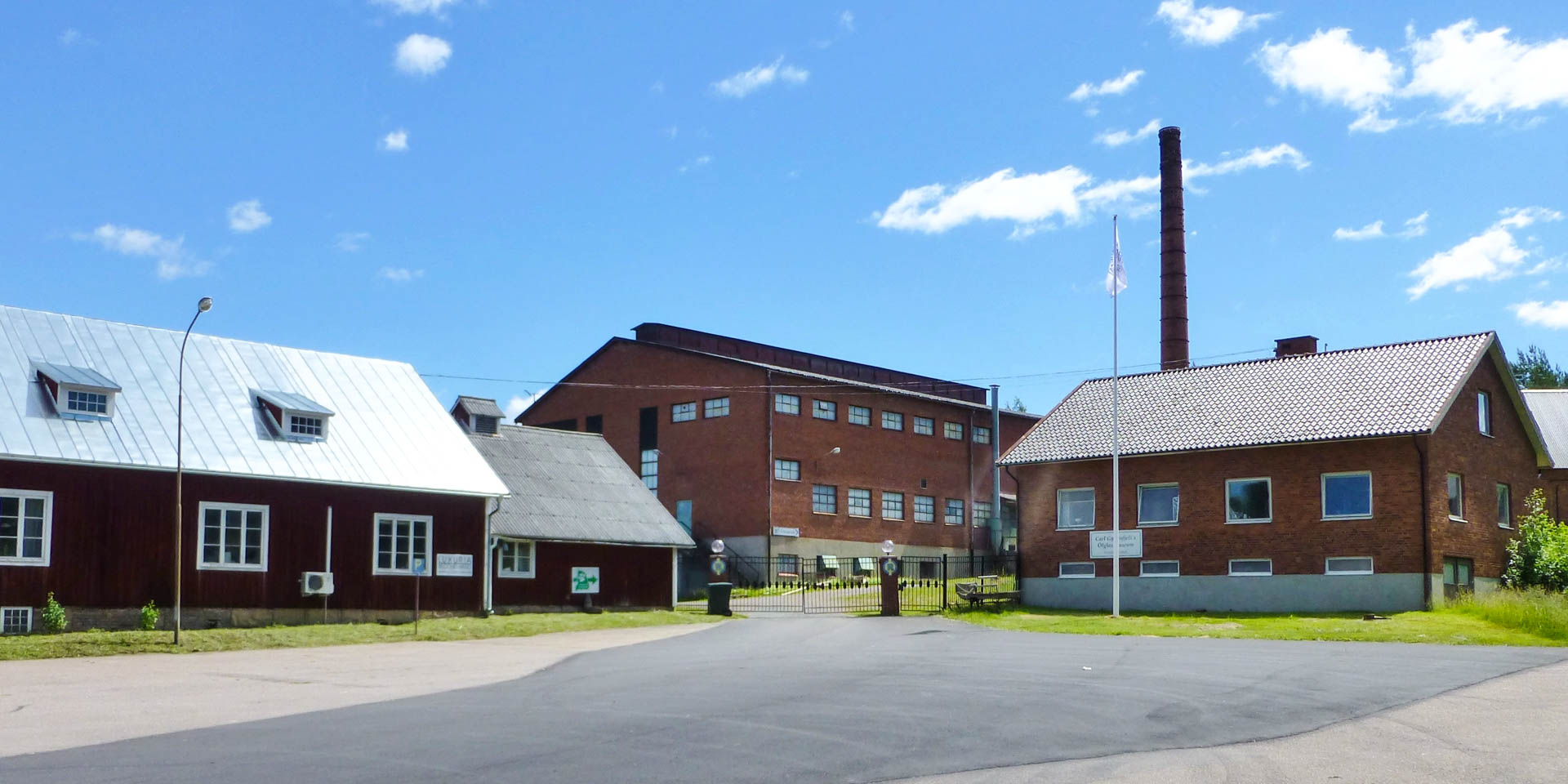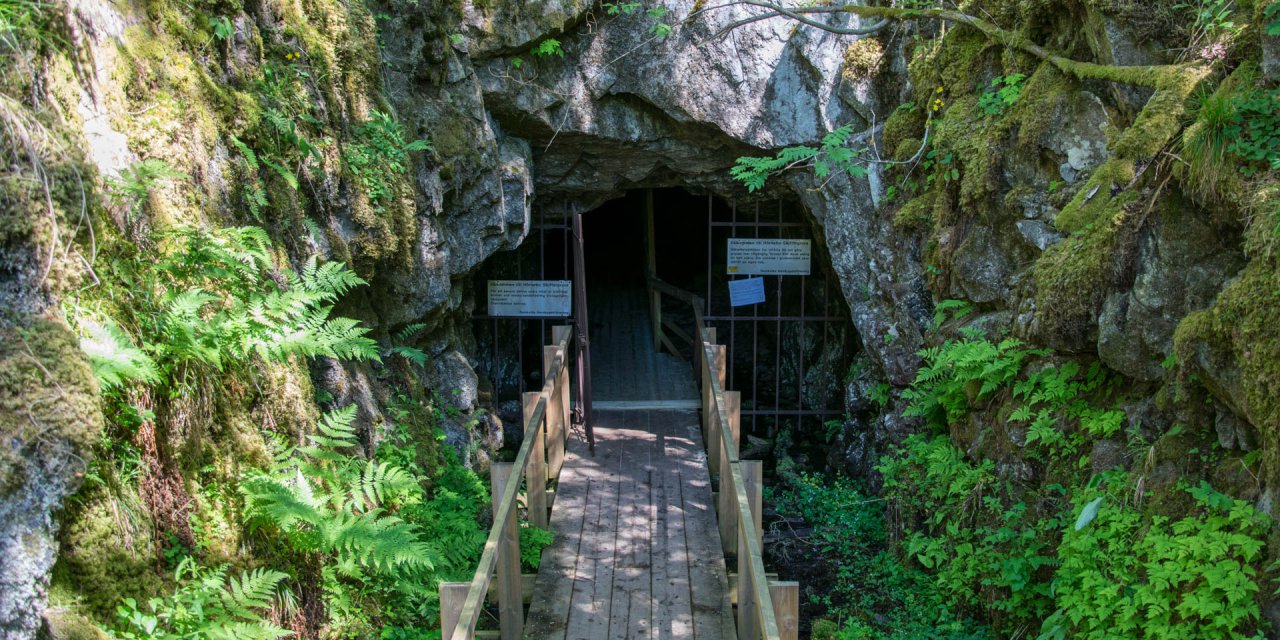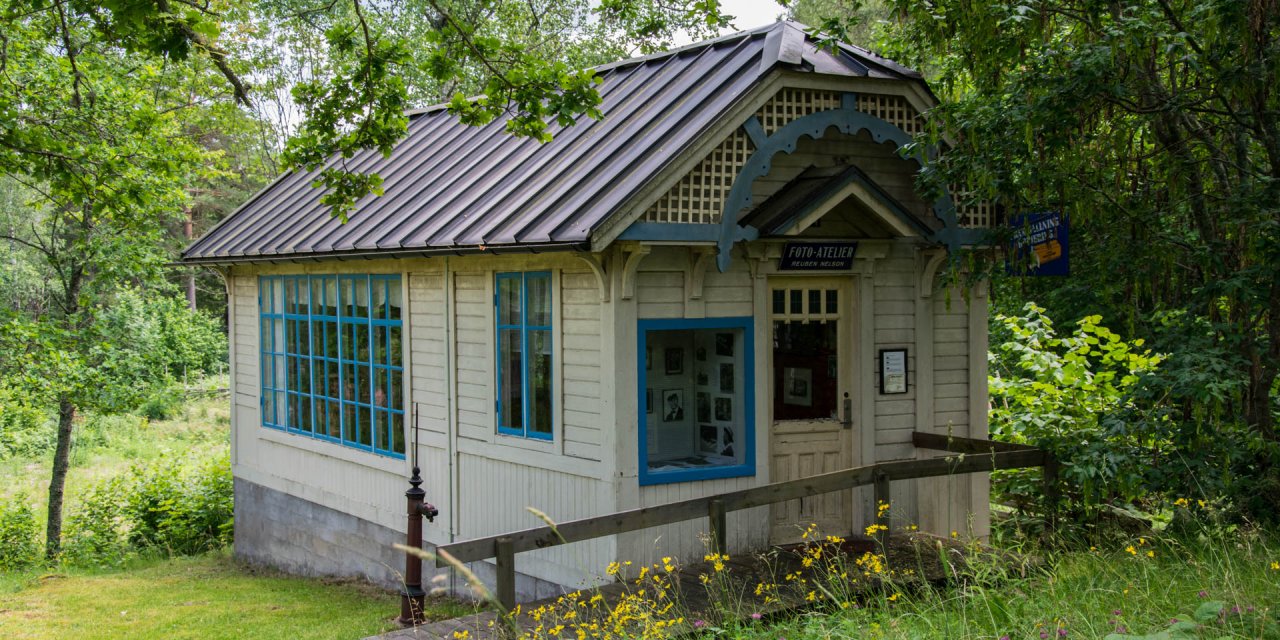

Rosdala Glasbruk
Industrial museum in Norrhult-Klavreström
The impressive industrial museum Rosdala Glasbruk in Norrhult-Klavreström, about 15 kilometers west of Åseda, shows a closed and completely preserved large glassworks.
Upon entering the abandoned Rosdala Glasbruk factory site, you immediately feel wrapped in the very special atmosphere of old industrial facilities. The large glassworks looks a bit like being in a deep sleep, because most of the equipment and machinery needed for production is still there.
In total, there are more than 20 halls and workshops on the factory premises. The large redbrick factory buildings at the front of the site are relatively young and date back to 1966, when the glassworks was modernized with great effort. The numerous smaller buildings, some of them made of wood, date back to the early days of the glassworks around 1900, when it was still common practice to house each workshop in its own building and not to combine them all under one roof.
One of the older buildings is the former blacksmith's shop, where the tools needed for production were made and repaired. The adjoining, long wooden shed contained the peat and wood storage and the gas works, in which wood gas for firing the old glass furnace was produced until 1966.
In the long shed is now many old equipment that were needed for production and parts of the old gas works are exhibited. Among the tools is a collection of old forms, mostly made of beech wood, which give the mouth-blown glass objects their external form.
The building, opposite the long shed, contains the fully preserved pottery workshop, in which the melting pots for the glass production were made of heat-resistant clay. A little bit aside is the old melting furnace in its own small shed. It is a large, gas-heated round oven that could hold 10 melting pots simultaneously. When the glassworks was modernized in 1966, the rare glass furnace and its shed became a small museum of it own.
History
Very soon after its founding in 1895, Rosdala Glasbruk was specialized in the production of lamp glass. Initially glass bulbs, shades for kerosene lamps and glasses for gas lanterns for street lighting were made. After the electrification of the households, glass lampshades of all kinds were produced.
First of all, there were five glassworks in Sweden that produced lampshades that gradually stopped manufacturing. The Rosdala Glasbruk bought all forms of the other glassworks and was the only manufacturer of lamp glass in Sweden for a long time until it was shut down around the year 2000. The museum's collection today contains between 5,000 and 7,000 different types of forms, most likely all forms for all of the glass lamps that have ever been produced industrially in Sweden.
Almost at the same time as the closure of Rosdala Glasbruk, it was placed under monumental protection as an important industrial monument and is the only glassworks in the well-known Kingdom of Crystal that has been declared an historic monument.



